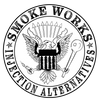
Overdose due to Smoking?
A response to: Routes of Drug Use Among Overdose Deaths
Written by Katie Ahern
Edited by Jim Duffy
"These findings do not indicate that smoking drugs increases risk of overdose, but that people's preferred route of administration is shifting."
Increased Risk of Overdose due to Smoking?
In February 2024, the CDC released “Routes of Drug Use Among Drug Overdose Deaths,” a report on drug overdose death trends related to routes of administration. Smoking overtook injecting in the period between July-December 2021, and the gulf has been increasing since.

Overdose deaths with evidence of smoking has risen from 13.3% of all deaths to 23.1% from in period 1* to period 2**, while overdose deaths attributed to injecting have fallen from 22.7% of all deaths to 16.1% respectively.
This trend is seen across different combinations of drugs; in deaths involving only “illegally manufactured fentanyl and fentanyl analogues” (IMFs), only stimulants, and both IMFs and stimulants. Deaths involving neither IMFs or stimulants (it is unclear which drugs exactly these are) saw no change in deaths from smoking.
The trend of increased deaths with evidence of smoking compared to injection is also consistent across all regions of the US. Below is a summary of changes in overdose deaths with evidence of injection versus smoking by drug type and region:
Where does this data come from?
The CDC gets this data from SUDORS, the State Unintentional Drug Overdose Reporting System. 49 states (and D.C.) participate, but this particular report looks at 28 states which had the information necessary for examining these trends for 75% or more of the overdose deaths in their state. State jurisdictions were determined by the census bureau. From January 2020-December 2022, 139,740 overdose deaths occurred in these states. The information comes from death certificates, postmortem toxicology tests, and medical examiner/coroner reports. The 28 states data for this report comes from includes:

*Period 1: January 2020 - June 2020
**Period 2: July 2022 - December 2022
This report also looks into trends relating to snorting and overdose, please see the full report for details.
Alaska, Arizona, Colorado, Connecticut, Delaware, District of Columbia, Georgia, Illinois, Kansas, Kentucky, Maine, Maryland, Massachusetts, Minnesota, Nebraska, New Hampshire, New Jersey, North Carolina, Ohio, Oklahoma, Oregon, Pennsylvania, Rhode Island, Utah, Vermont, Virginia, Washington, and West Virginia. Illinois and Washington included data from counties that accounted for ≥75% of drug overdose deaths.
How do they know the route of administration?
They looked at four routes of administration: injecting, smoking, snorting and ingestion. Evidence relies on witness reports, drug paraphernalia found at the scene, or physical evidence on the deceased. For injecting, this would be observing recent injection points or injection supplies. For smoking, finding supplies like pipes, foils, and torches is considered evidence. Though imperfect, this data is likely the most comprehensive available.
So what?
These findings do not indicate that smoking drugs increases risk of overdose, but that people's preferred route of administration is shifting.
We don’t blame em!
There are a number of reasons why someone might choose to smoke rather than inject their drugs (fewer skin infections, more control over your use, etc). Some may believe that smoking lessens the risk of overdose, but the risk remains. Any route of administration carries this risk. Different routes of administration can:
(1) get the drug into your system faster and
(2) make more of that drug available in your system.

Still, enough of any drug any way can result in an overdose. Each of these deaths, no matter the route of administration, are ultimately a result of systemic failure, and it is the responsibility of those systems to support efforts to respond to the needs of people who use drugs to keep us safe.

